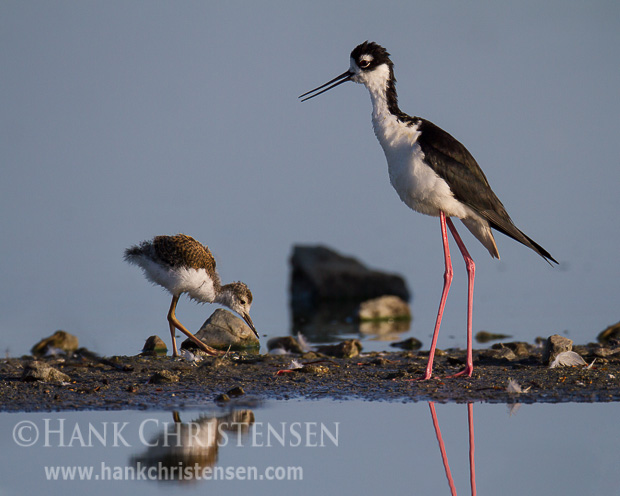
May you have a year filled with joy, rejuvenation, and rebirth. Thank you to all of you for following along on my photo exploits for another year. Here’s to a great 2013 and many more wonderful moments!
While I was able to capture some nice shots of other spring newborns this year, as usual the most ubiquitous and easy to photograph chicks were Canada Geese. Between April and early June these goslings are just about everywhere around the Bay, as evidenced by the goose pellet landmines strewn along miles of shoreline. When running along the bay trail, I sometimes feel more like a triple-jumper than a jogger.
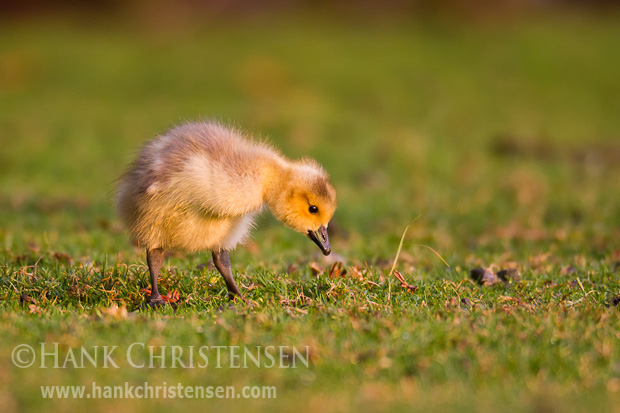
However, as annoying as these geese can be, you can’t deny the cuteness of their offspring! Here are a group of four heading across the road to (literally) greener pastures.
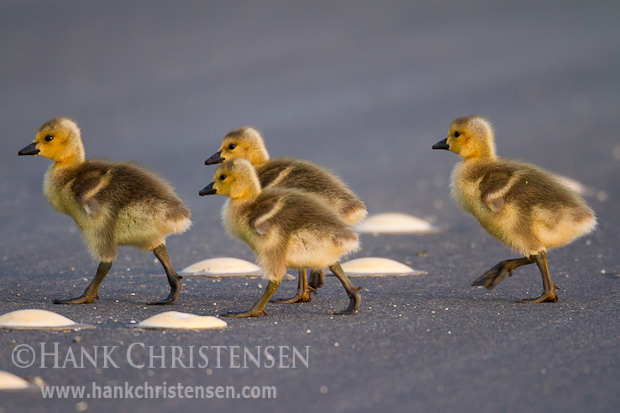
In all I probably saw about ten different groups (gaggles?) of chicks with precocious trouble makers running off by themselves. Each group was accompanied by at least two adults, and some families would group together with four or five adults and as many as twenty little ones. The watchful parents had their work cut out for them, but all in all, this is a relatively safe environment.
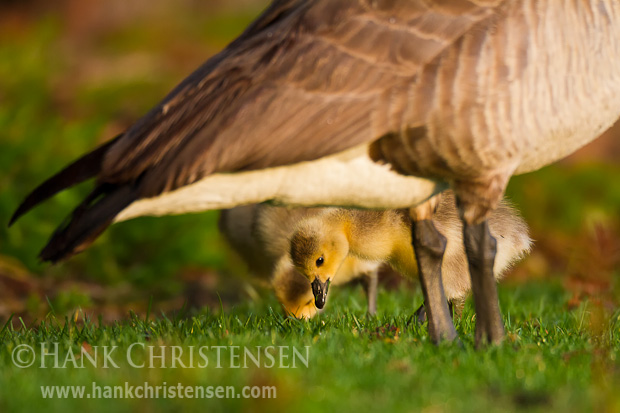
It was a pleasure to see the new families partake in a variety of activities, my favorite of which was swimming lessons.
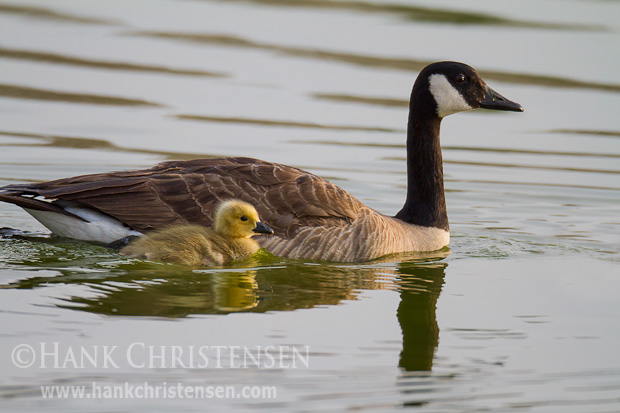
Yes, they poop a lot, make a racket, and get in the way sometimes, but I for one am a fan of the Canada Goose.
I took this photo last year of a black-necked stilt and her three young chicks. I had set up in my usual position, with my lens close to the water surface in order to achieve a more intimate eye-level perspective. I was happy with the shoot and this shot in particular, showing all three chicks together with the mother standing protectively over them.
The only thing that bothered me each time to looked at it was the out-of-focus mud bank just peaking up into the frame. It had not been a concern when I was shooting the mother by herself, but once the chicks were introduced to the scene, the mud cut off parts of their reflections and became a distracting element.
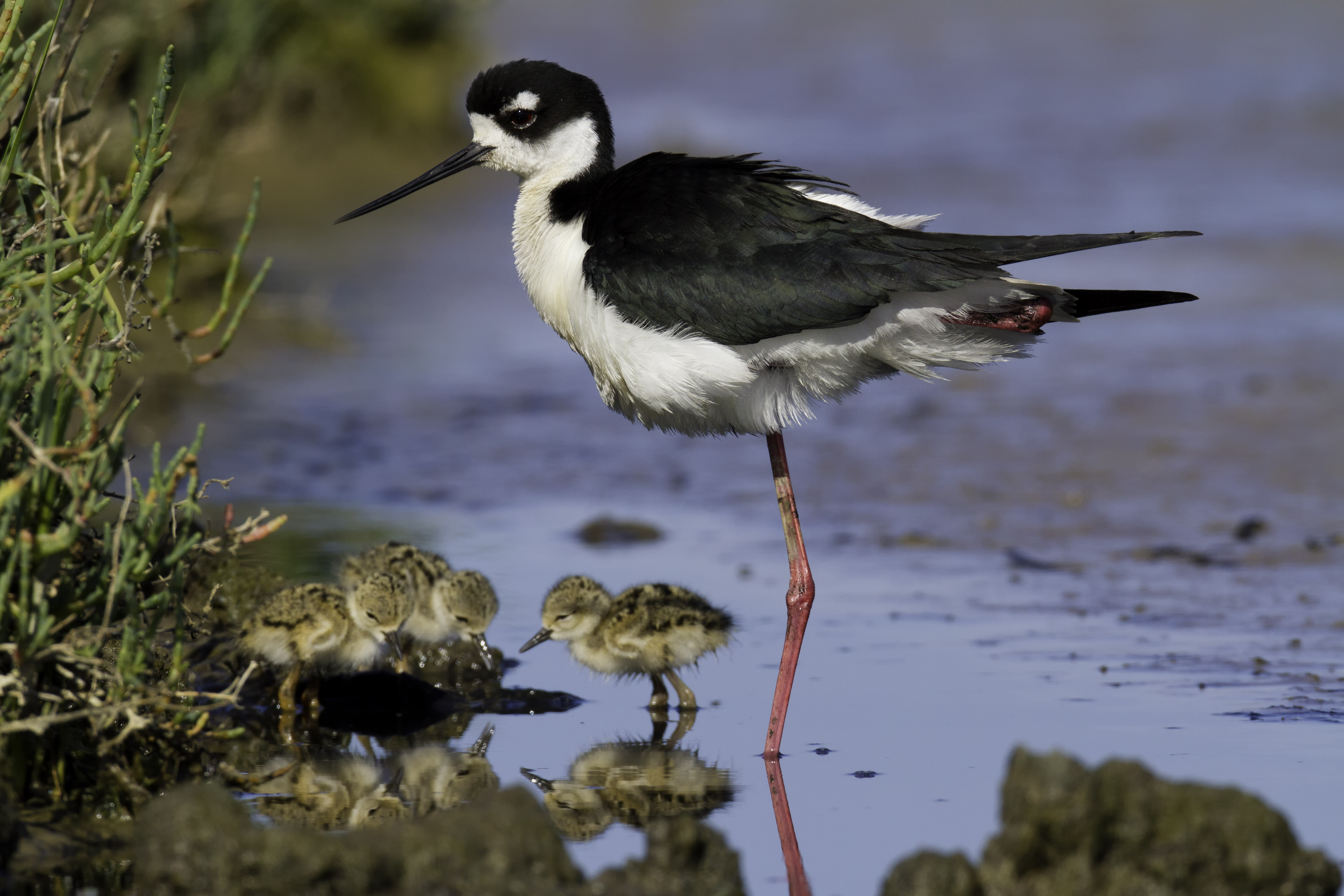
This week I took another look at the shot and realized I might be able to pull off digitally removing the mud feature, and finally fulfilling my original vision. The result is below.
I digitally removed the entire mud bank across the bottom of the photo, and restored portions of each chick’s reflections to rebuild what had been hidden behind the mud. While I was at it, I removed a distracting out-of-focus blade of grass from the left hand side of the photo.
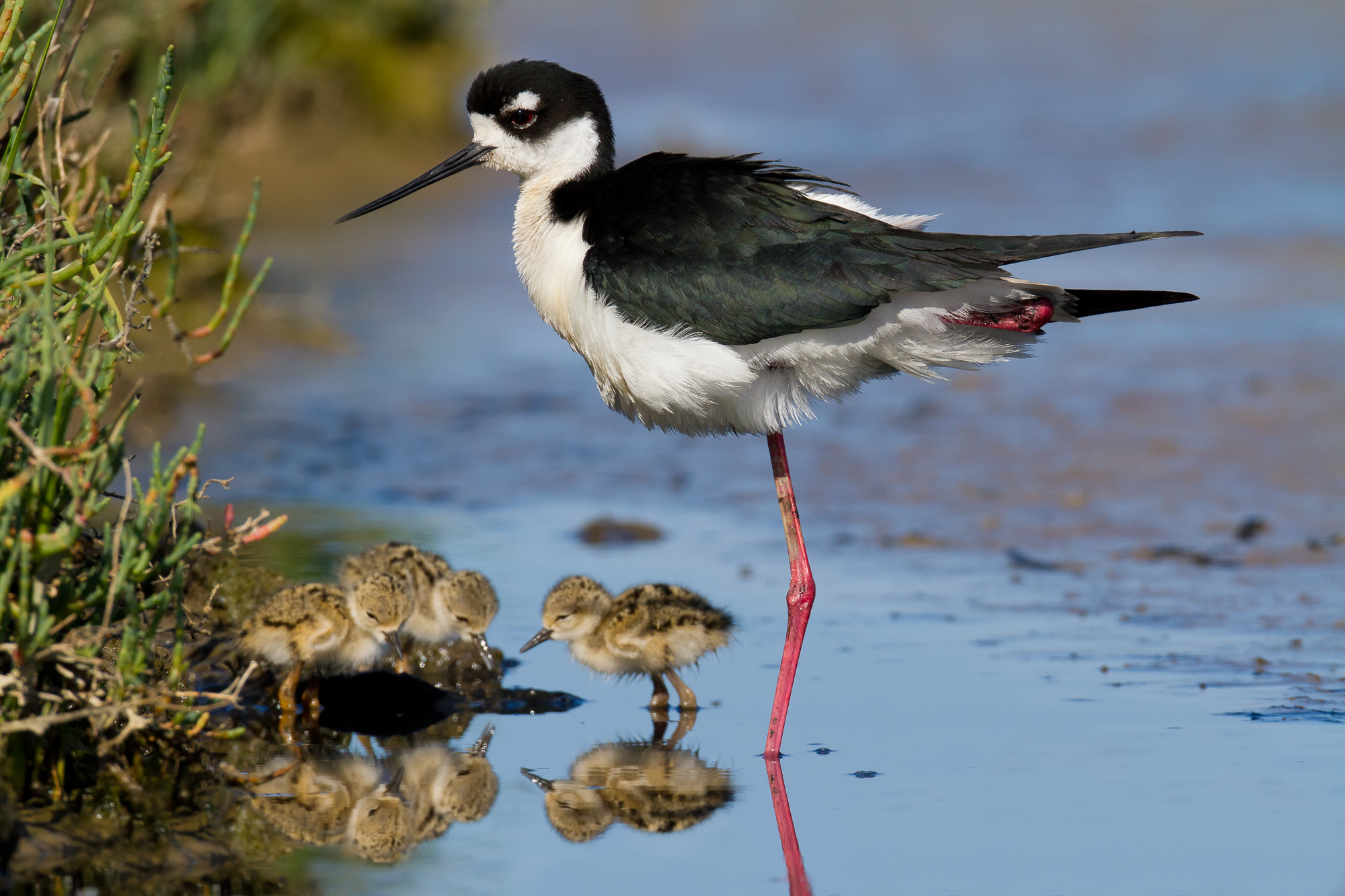
Was my change acceptable? Ethical perceptions of photography range wildly. Each photographer and photo critic sits somewhere on the spectrum from thinking that photography is merely a form of art so it is up to the artist’s vision, to thinking that any changes to what was captured by the camera is unethical and not acceptable.
In fact, ethics in photography cover topics other than just post-processing manipulation (which probably gets 80% of the attention). Even when a photograph represents accurately what a camera captures, it does not mean that the scene wasn’t artificially created by the photographer.
I think the judgment lies in how the photograph is presented to the audience. Is this presented as a work of art created in the mind of the photographer? Is it a natural history image, meant to accurately depict a natural scene or behavior? Do the digital edits in any way change the fundamental portrayal of that natural scene or behavior?
For example, in the digitally altered image presented in this article, if I had artificially inserted any of the chicks into the scene with the mother in order to create more emotional impact, that would go beyond what I consider an ethical representation of my work. It would be depicting a behavior in a species that never actually took place. However, the edits I have made fall inside what I consider ethical. I have not changed the position or behavior of any of the subjects of the photo. I have only removed an aesthetically distracting element in order to create a more pleasing photo.
What do you think? I’d love to hear your opinions on the matter.
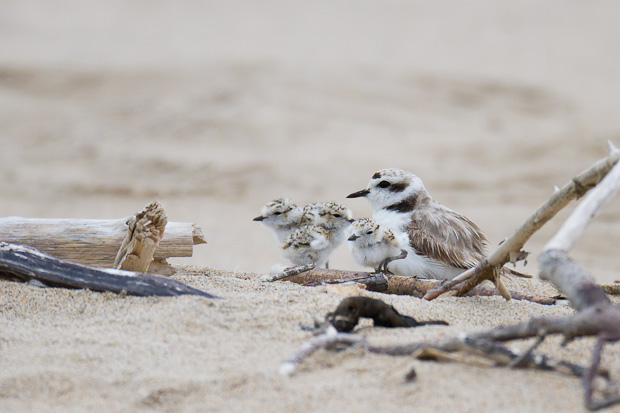
Recently I had the opportunity to photograph a new snowy plover family nesting along the Pacific side of the San Francisco peninsula. Snowy plovers nest up and down the coast of the US in open sand. Well-known nesting grounds are often closed to the public during sensitive nesting periods, but this family managed to survive on a public, widely-used beach.
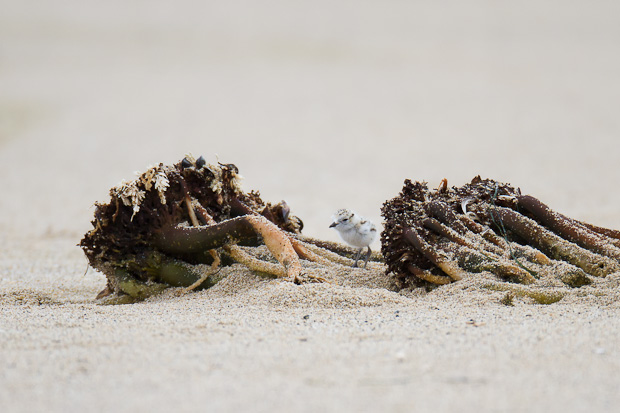
Capturing this vulnerable family on camera was a delicate operation. I had to be very careful not to get too close or spend too much time in contact with the family, or risk stressing out the mother or the chicks and causing irreparable harm to them. I paid close attention to the mother, looking for signs of stress or protective behavior.
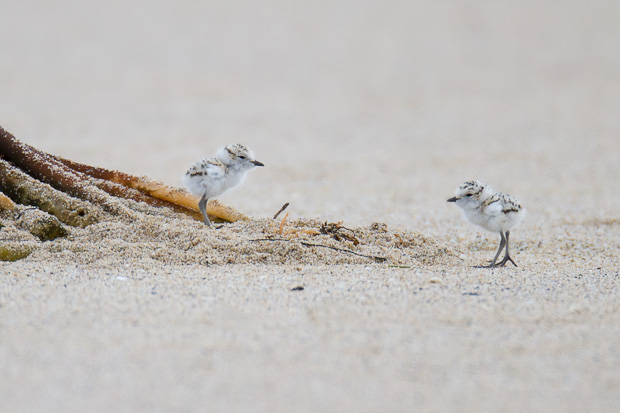
I had been looking for an opportunity to photograph snowy plover chicks for over two years. At that time I found and photographed a nesting plover, but never was able to make it back for the hatchlings. The first thing I realized when I found these ones were how quickly they moved! They would each run at a full out sprint in opposite directions. I loved watching their antics and they poked around towering driftwood or climbed mountainous piles of foot-tall seaweed – quite an effort for their inch-tall frames.
Soon however, they found their way back to mom, and attempted to squeeze themselves underneath her protective tent of feathers.
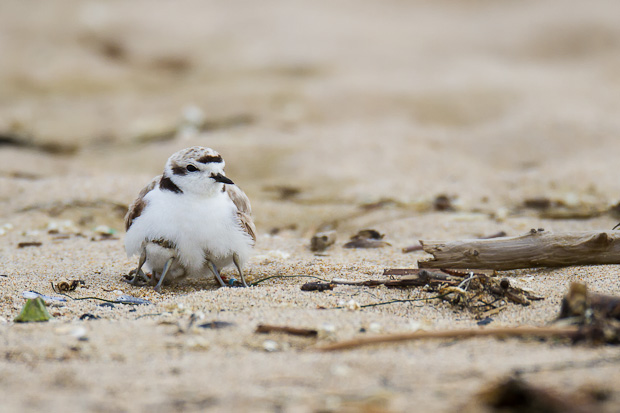
Here the mother already has one chick nestled in her feathers, while the remaining two siblings try to push their way in.
I limited my time with them to only 10 minutes, and made sure to keep my distance. I wanted to make sure the little ones were spending their precious energy foraging for food instead of running from a giant with a camera!
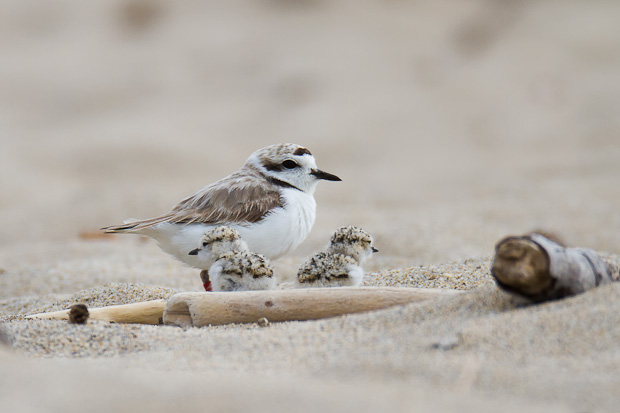
It was great to see life thriving, especially outside of protected areas. It seems at least this one family was able to adapt to their environment and raise three chicks on a busy beach.